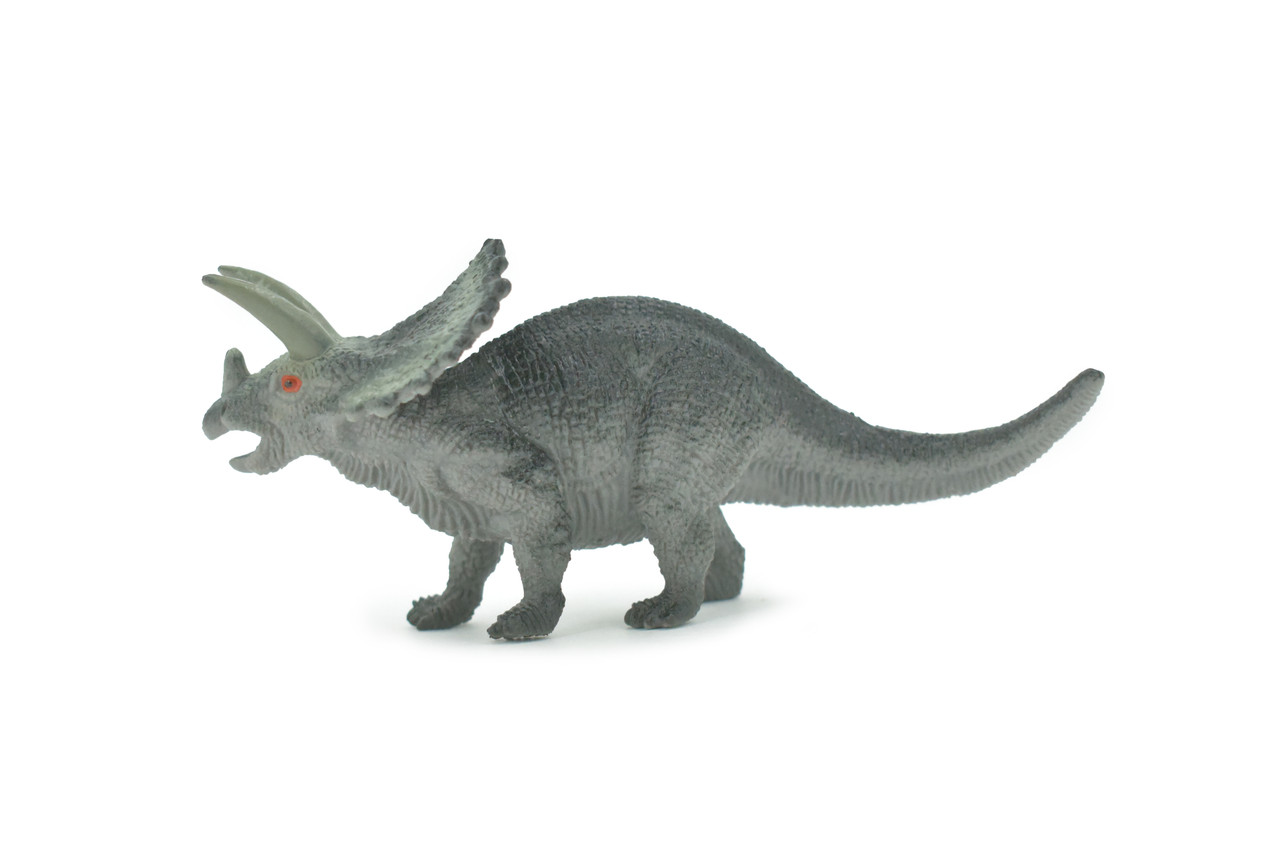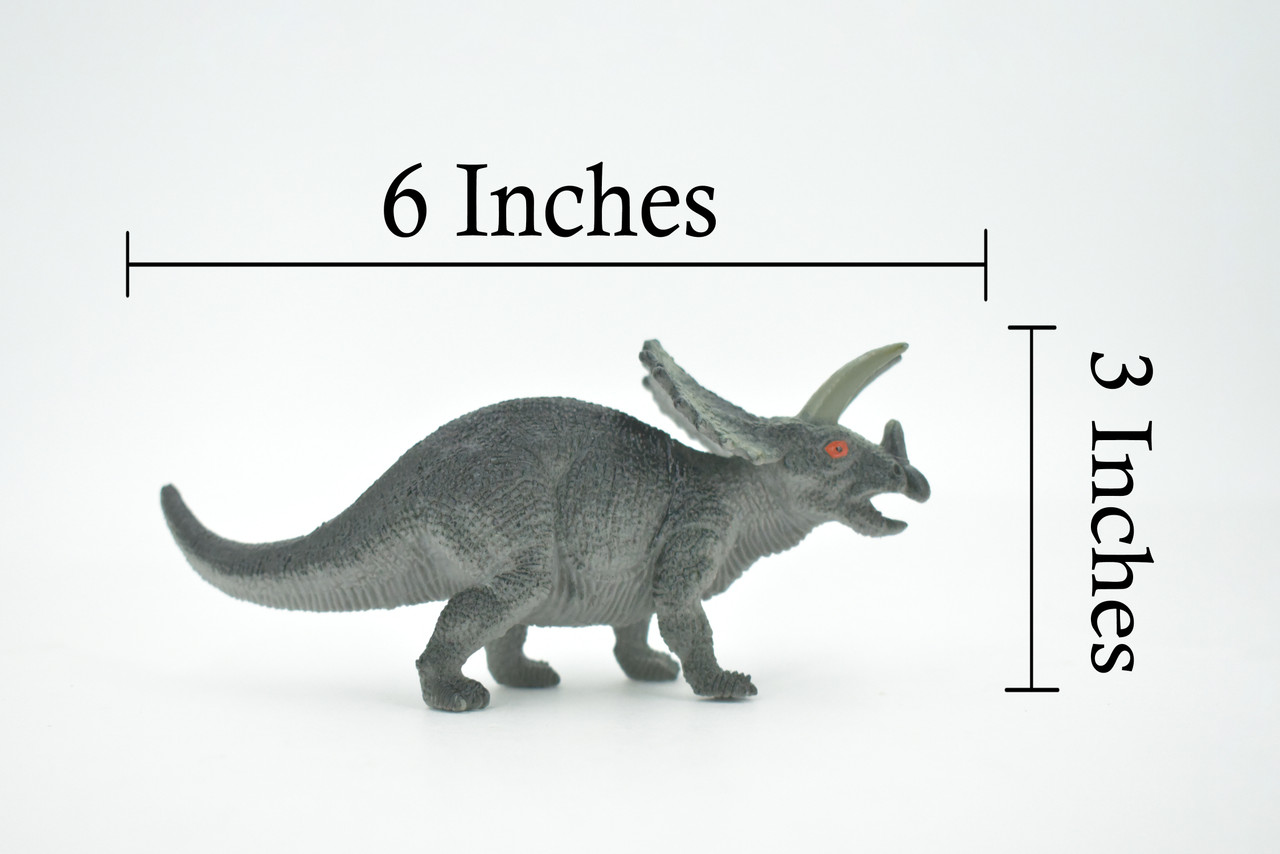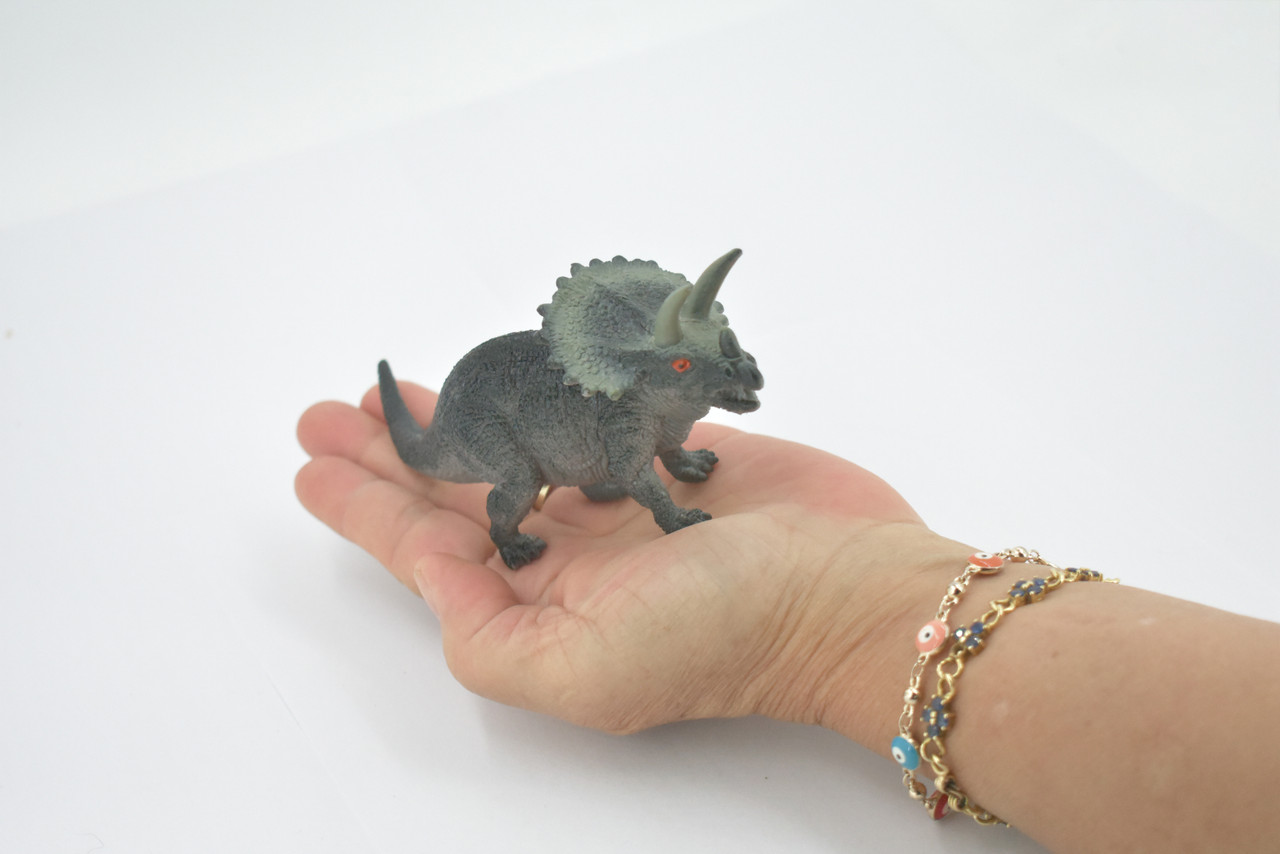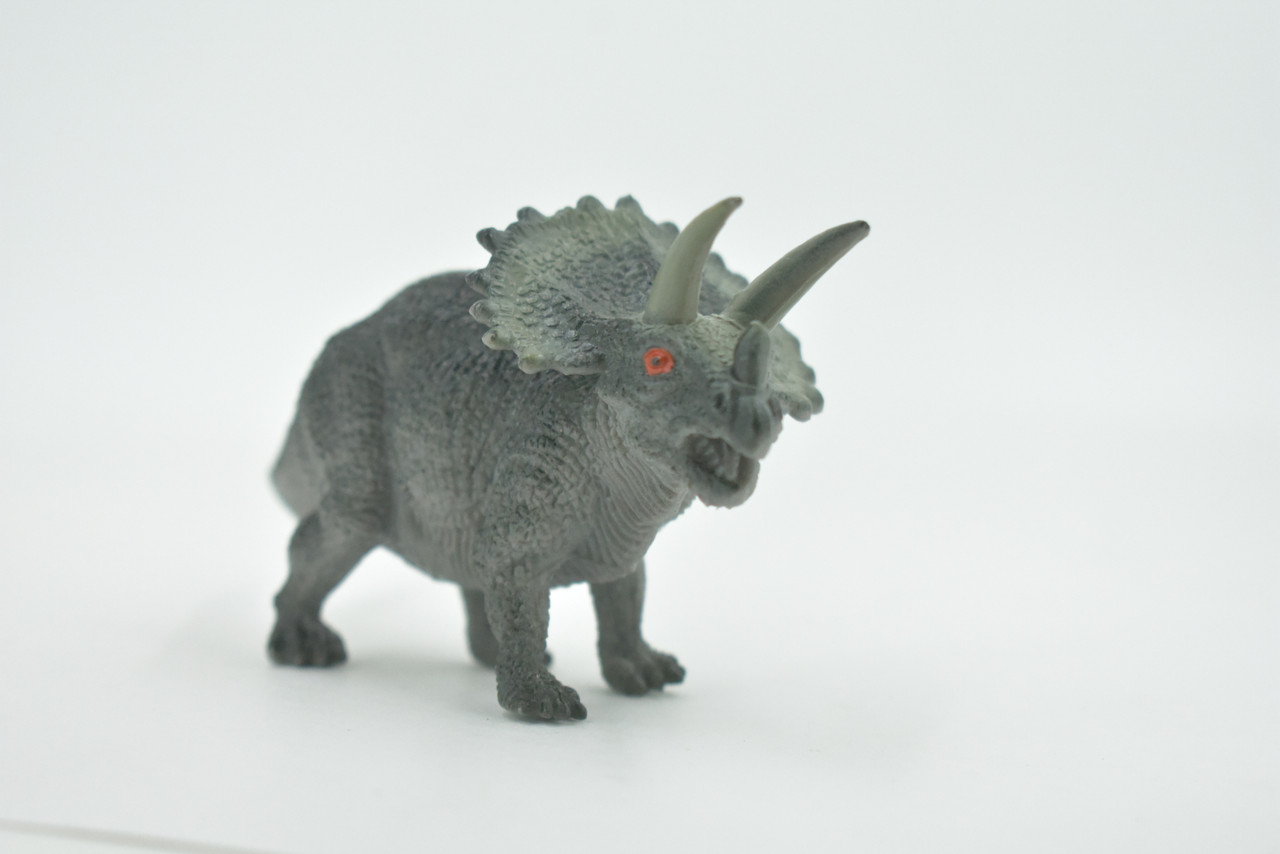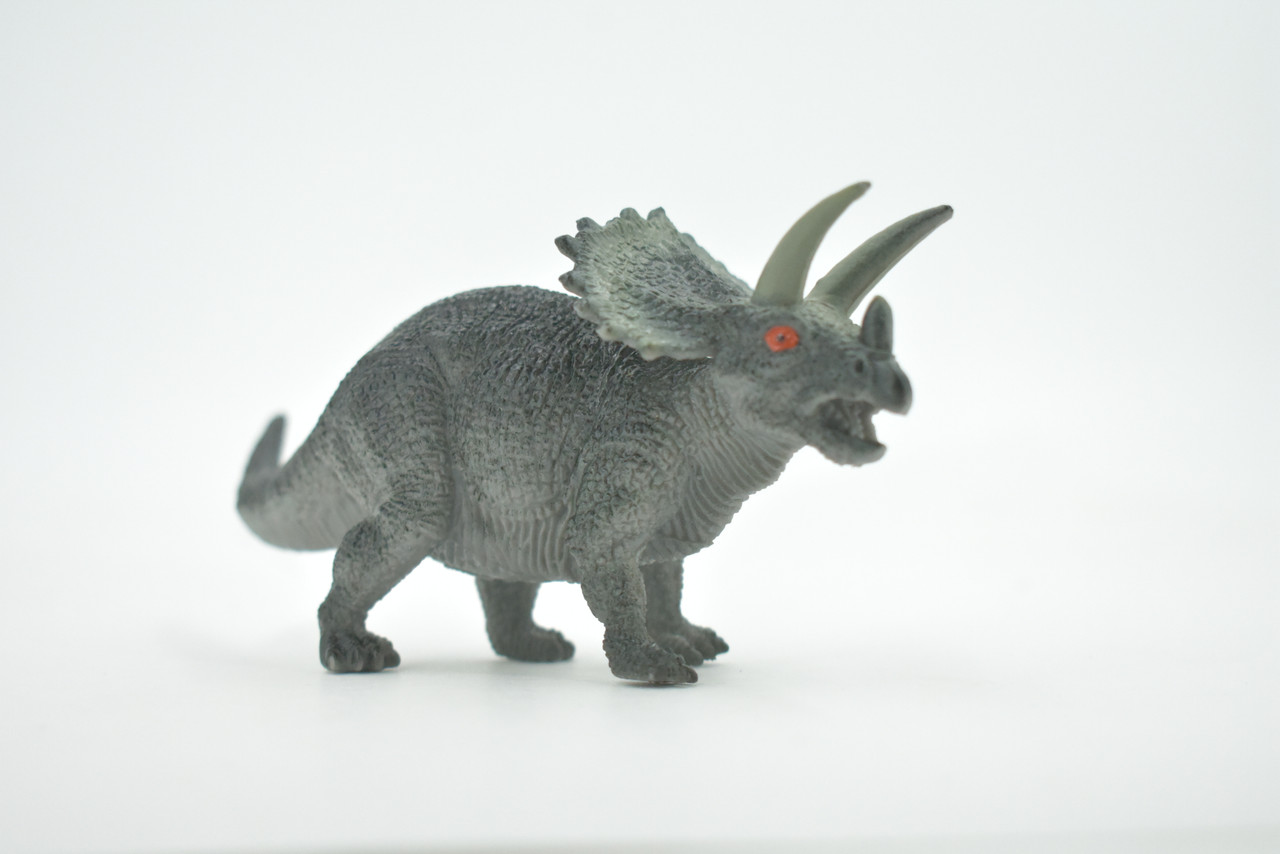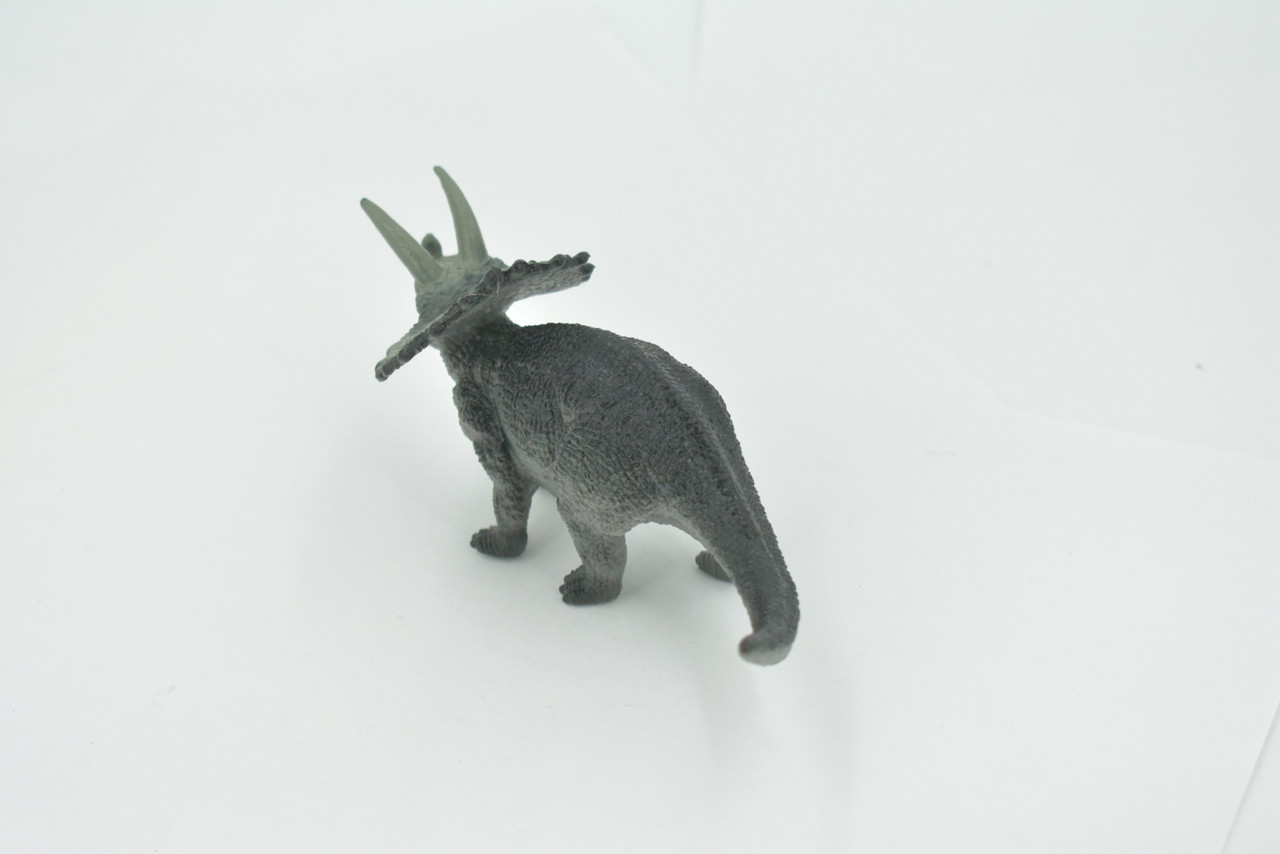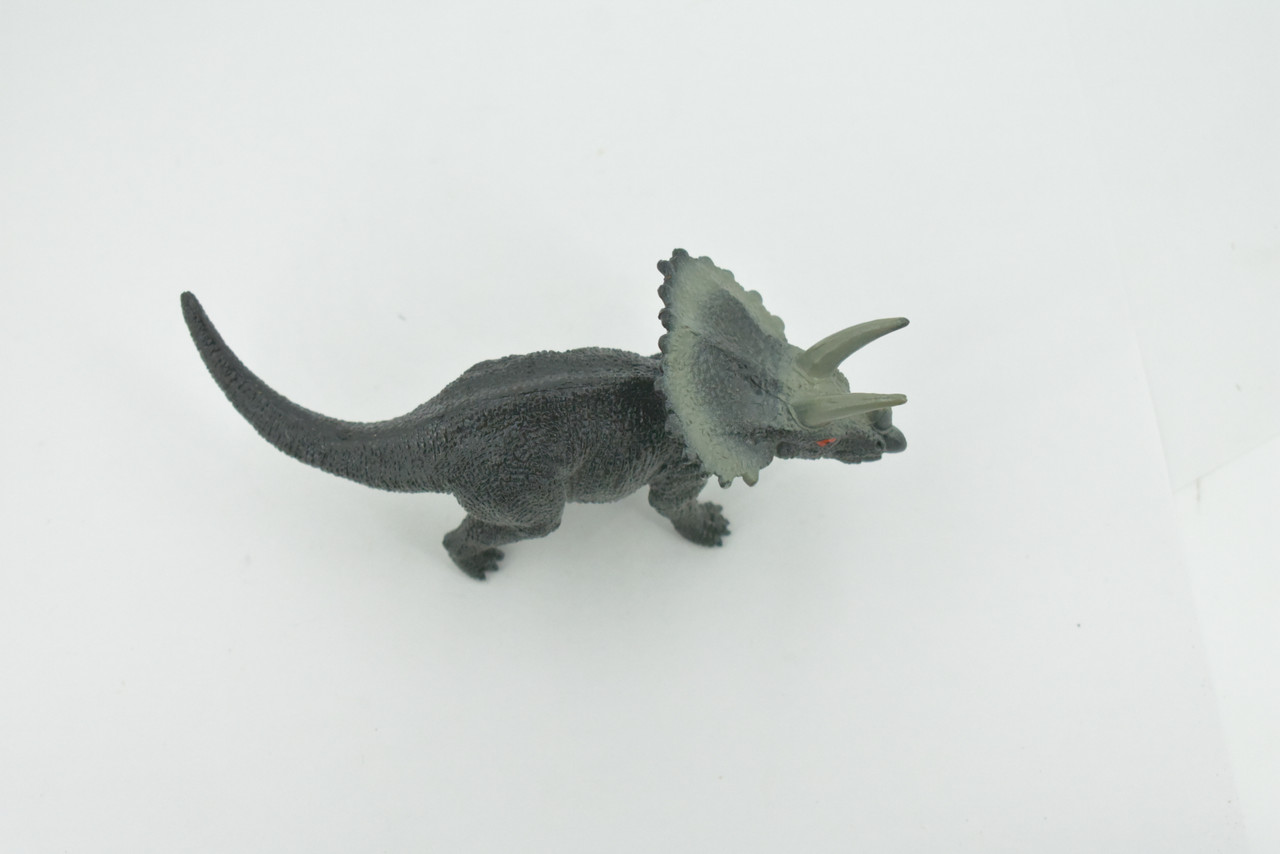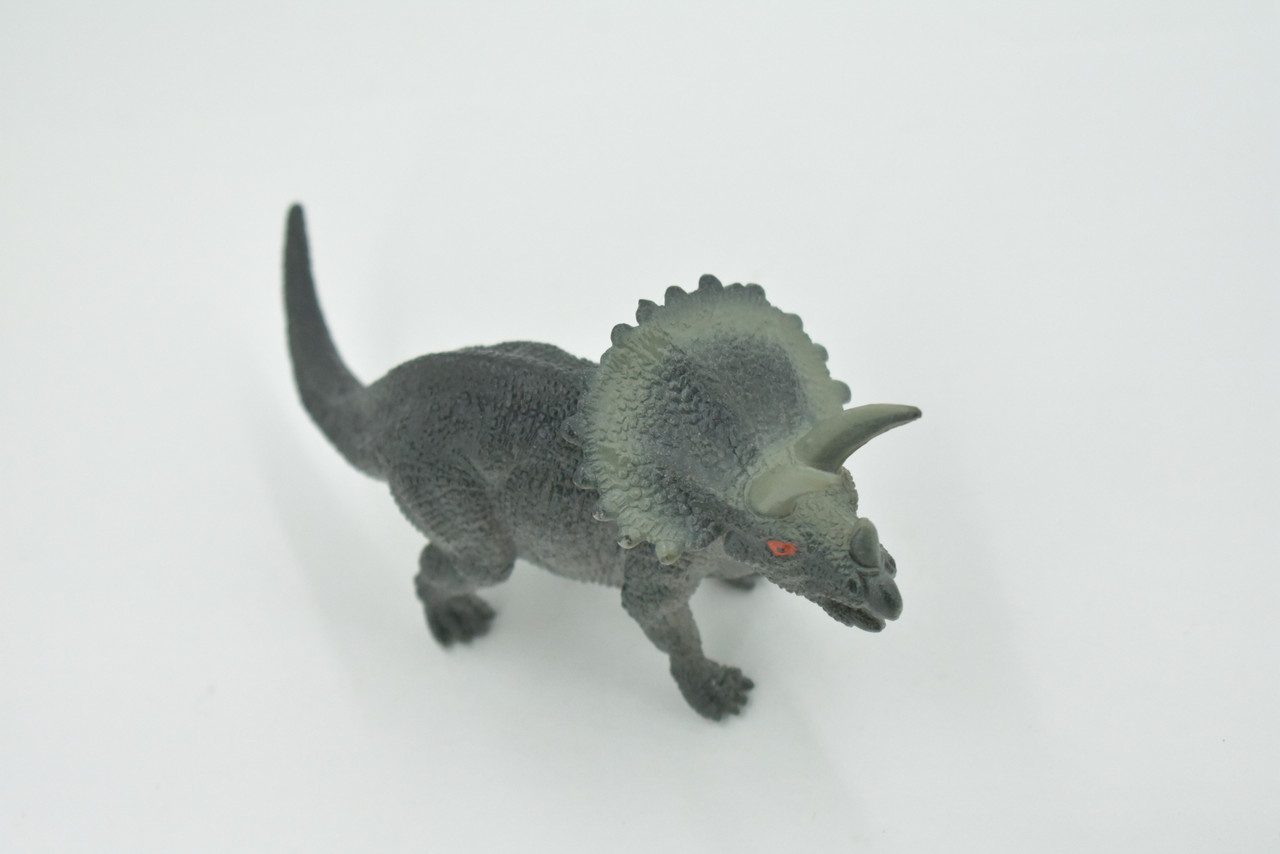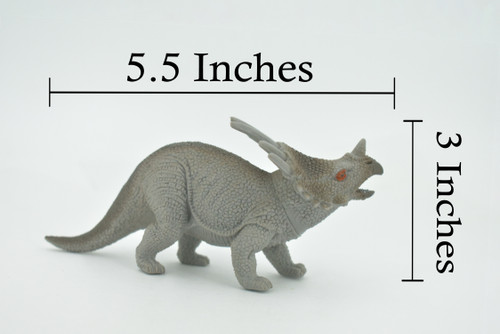Product Description
This Triceratops 6" figure includes hand painted features to give it realistic details that are true to natural anatomy. This figure is considered a high-quality replica. Highest Quality Natural Rubber.
Triceratops, (genus Triceratops), large quadrupedal plant-eating ceratopsian dinosaur that had a frill of bone at the back of its skull and three prominent horns. Fossils of “three-horned face,” as its Latin name is usually translated, date to the final 3 million years of the Cretaceous Period (145.5 million to 65.5 million years ago), making it one of the last of the non-avian dinosaurs to have evolved. Paleontologists estimate that the body length of Triceratops approached 9 meters (30 feet). The largest adults are thought to have weighed 5,450–7,260 kg (approximately 12,000–16,000 pounds). Triceratops is the most commonly recovered dinosaur in the uppermost Cretaceous deposits of western North America, and its remains have been found throughout the region. Although many other large ceratopsians have been discovered in massive bone beds representing numerous individuals, Triceratops has only rarely been found in groups of three or more individuals. When the first specimen was discovered in 1887, it was mistaken for a gigantic species of extinct bison. Only later did further discoveries reveal that it was actually a horned dinosaur. The majority of Triceratops specimens are known from skulls or partial skulls, and bones from the rest of the body are less commonly recovered. From fossil remains of other parts of the body, paleontologists have been able to determine that the hind limbs of Triceratops were larger than the forelimbs, but both sets were very stout. Whether the forelimbs were held fully erect, as in the modern rhinoceros, is debated, though there is some evidence to suggest that they were held in a semi sprawling position (an intermediate stance between the erect position of a rhinoceros and the fully sprawling limbs of most lizards). The dinosaur’s short toes probably terminated in small hooves. The tail, as in many other large horned dinosaurs, appears to have been fairly short. The skull is known to have undergone dramatic changes in shape throughout the development of Triceratops from an embryo to an adult. The smallest Triceratops skulls have small straight horns above their eyes. Slightly larger juvenile specimens have backward-curving horns above the eyes.
Thanks for visiting Collectible Wildlife Gifts, the leading provider of high-quality, lifelike animal Designs and gifts! We work hard to ensure we have a diverse range of products. Each product is inspected for their quality craftsmanship. Whether you're searching for a great gift or seeking educational designs for displays, we’ve got you covered.
At Collectible Wildlife Gifts, our products appeal to a wide range of customers, including family, friends, and educators. Our products are trusted and used by professional organizations as well including aquariums, zoos, and movie studios.
Our extensive line of products boasts everything from plush sharks to educational animal growth cycles. Our products bring joy to recipients, and serve as valuable educational resources, sparking curiosity and fostering learning.
Discover the wonders of the natural world with Collectible Wildlife Gifts. Browse our collection today!

